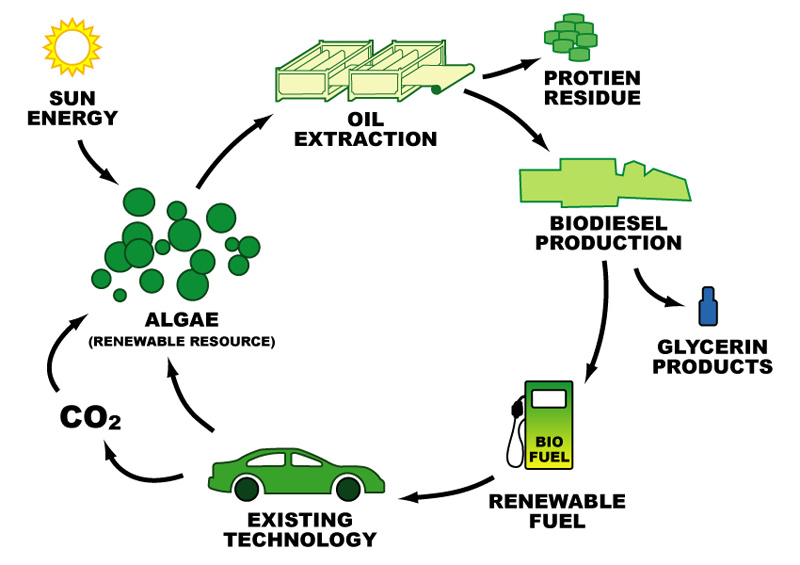The U.S. Navy and Marines go Green! |
The Third Generation: Algal FuelAlgal fuel is the third generation of biofuels. According to U.S. Department of Energy, algal oil can yield up to 30 times more energy per acre than land crops like soybeans. Algae can be used to produce vegetable oil, bioethanol, biomethanol, biobutanol , biodiesel, an other biofuels. [6.1] Watch the full episode. See more NOVA scienceNOW. [6.2] The Algae to Biodiesel Process
[6.3] The benefits of Algae over previous generations:
Home | Biofuels and Bioenergy | Innovators | Issues | Impacts | About Us | Citations |


